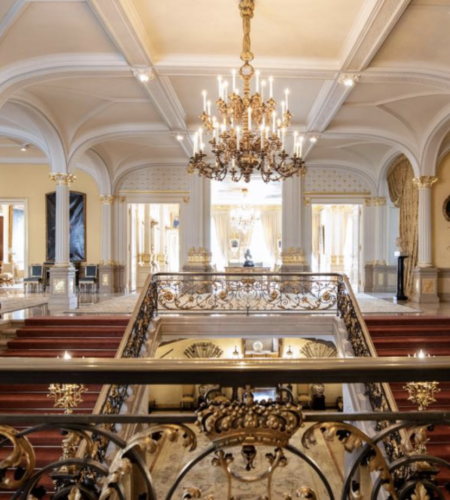Exploring the Grand Ducal Palace: The Heart of Luxembourg’s Monarchy
The Grand Ducal Palace in Luxembourg City stands as a majestic symbol of the country’s history, culture, and royal heritage. Located in the heart of the Old Town, this stunning Renaissance-style building serves as the official residence of the Grand Duke of Luxembourg and a key site for state ceremonies and official functions. With its elegant facade, richly decorated interiors, and deep historical significance, the Grand Ducal Palace is a must-visit for anyone exploring Luxembourg City.
A Rich Historical Legacy
The Grand Ducal Palace’s history dates back to the late 16th century, when it was originally built as a town hall during Luxembourg’s Spanish rule. Over the centuries, it underwent various transformations, serving as a government building before becoming the official residence of the Grand Duke in 1890. The palace’s architectural evolution reflects Luxembourg’s rich and diverse history, blending Gothic and Renaissance influences with later modern additions.
During World War II, the palace was occupied by German forces and narrowly avoided destruction. After the war, it was meticulously restored and continues to serve as a residence for Luxembourg’s monarchy.
Architectural Highlights
1. The Facade
The palace’s exterior features stunning Renaissance design elements, including ornate stonework, arched windows, and decorative balustrades. The building’s golden hue and symmetrical structure make it one of the most photographed landmarks in Luxembourg City.
2. The Balcony
A highlight of the facade is the central balcony, from which members of the royal family greet the public during national celebrations and important events.
3. Interior Splendor
The palace’s interiors, though not always open to the public, are renowned for their opulence. Lavish chandeliers, intricate tapestries, and antique furnishings reflect the grandeur of Luxembourg’s monarchy. Key rooms include the Yellow Roomand Hall of Knights, both used for state receptions.
Tours and Visiting Opportunities
During the summer months, the Grand Ducal Palace opens its doors to the public for guided tours, providing a rare glimpse into its elegant interiors and historical significance.
- Guided Tours: Available in multiple languages, these tours take visitors through the palace’s ceremonial rooms and offer insights into its history, architecture, and the role of the Grand Ducal family.
- Booking: Tickets must be purchased in advance, as spots are limited. Tours are organized by the Luxembourg City Tourist Office.
Tip: Book early, as tours are highly popular and often sell out quickly.
The Role of the Grand Ducal Palace
The Grand Ducal Palace serves as the official residence of the Grand Duke of Luxembourg. While it is not a permanent home, it is used for hosting foreign dignitaries, official state receptions, and significant royal events. It is also the administrative office for the Grand Duke and a symbol of Luxembourg’s monarchy, which remains a vital part of the country’s identity.
Seasonal Highlights
- National Day Celebrations: The palace plays a central role during Luxembourg National Day (June 23), with parades, fireworks, and the traditional balcony appearance by the royal family.
- Holiday Decorations: During the Christmas season, the palace is beautifully illuminated, adding to the festive charm of the Old Town.
Visitor Information
Location:
17 Rue du Marché-aux-Herbes, Luxembourg City, Luxembourg
Tours and Admission Fees:
- Guided tours are available during summer months.
- Admission fees vary, with reduced rates for students, seniors, and children under 12.
Hours:
Tour times vary; check with the Luxembourg City Tourist Office for details.
How to Book:
Visit the official Luxembourg City Tourist Office website: Luxembourg City Tourist Office.
How to Get There
By Public Transport:
The palace is centrally located and easily accessible by bus and tram. The closest stops are near Place Guillaume II.
By Foot:
The Grand Ducal Palace is a short walk from other major attractions, including Notre-Dame Cathedral and the Luxembourg City History Museum.
Parking:
Public parking is available nearby, though spaces can be limited during peak times.
Best Time to Visit
The summer months are ideal for visiting, as guided tours are only available during this period. Early mornings or late afternoons provide a quieter experience for exploring the surrounding area.
A Symbol of National Pride
The Grand Ducal Palace is more than a royal residence—it is a symbol of Luxembourg’s sovereignty, history, and cultural heritage. Whether you admire its elegant architecture from the outside or take a rare guided tour of its interiors, a visit to this iconic palace offers an unforgettable glimpse into the traditions and grandeur of one of Europe’s smallest yet most fascinating countries.


Comments